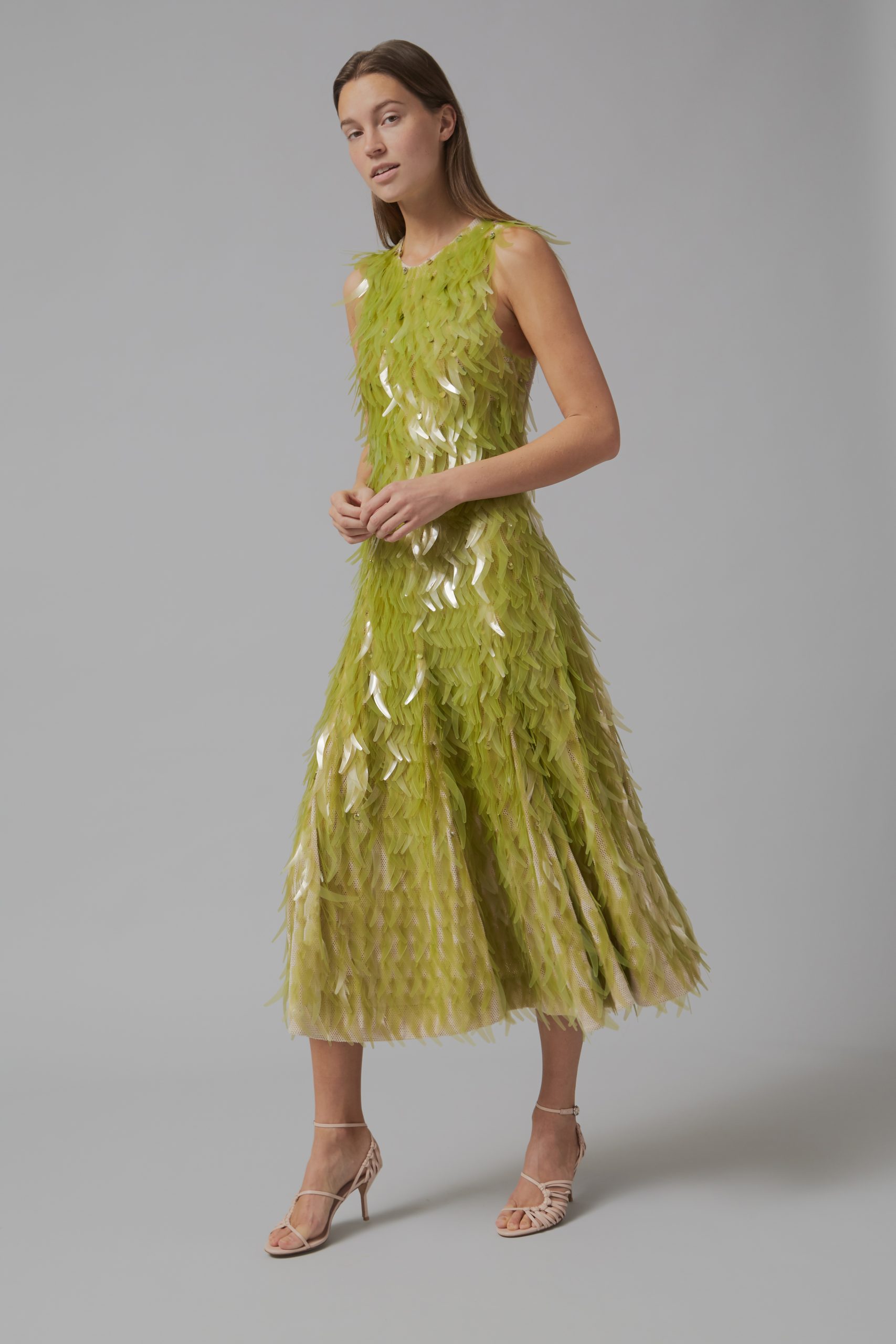The official Christian Dior account goaded Instagram audiences with black and white bite-sized chunks of teaser ahead of their runway show on January 23rd. The videos showed clipped interviews with Josephine Baker, to whom the show was produced in homage, Eartha Kitt and Marpessa Dawn, three female black American performers who paved their way to stardom in the streets of Paris. The creative direction thus seemed to track the development of leading ladies during the early 20th century and explore the building blocks and aesthetics that paved the way to the wider creation of the “new woman”.
Josephine Baker’s legacy is at the core of the story Maria Grazia Chiuri tries to narrate. The Missouri born actress became the 1st black woman in a major motion picture, with the 1927 silent movie Siren of Tropics. She shattered American codifications by refusing to perform for segregated audiences and was later offered official leadership in the civil rights movement. Baker has become emblematic for the brilliance of forthright and unapologetic ascent to stardom, despite the odds. She beautifully disrupted norms and became a firm favourite amongst the previously closed-minded bourgeoisie Parisian audience. Both Eartha Kitt’s celebrity trajectory in the 40s and 50s, and Marpessa Dawn’s in the 50s and 60s, mirror this story of American females intersecting with European film and music industries and delineating new images of glamour.
The Musée Rodin was aptly lined in incredible textile artwork by Mickalene Thomas exemplifying portraits of black and mixed-race women who have provided inspirations for female communities in the present day. On Instagram, Thomas quotes some words exchanged between singer Lena Horne and Ophelia DeVore, the first African American model in the US. She cites “It is true that you knew how beautiful black can be before the concept became commercial. More significantly you did something about it”. Chiuri and Thomas’ artistic collaboration spotlights the leading ladies that altered the trope of celebrity and beauty, the very ladies that did something about it.
The flapper image and attitude is also a hearty thread that strung through many of Dior’s pieces for SS23. The fringed and dropped waist dresses appeared reminiscent of Gastby-esque characters, whilst the commonality of short, sleeked hair and framing curls amongst the models alluded to the playful and powerful androgyny that the flapper image is associated with. Transfixed in the French word “garçonne”, boy with a female suffix, the flapper styles pair nicely alongside the more classical female suiting Dior also explores in this collection. There was a certainly a loud and interesting exploration of gender fluidity, and gender performance, throughout the runway.
This archetypal 1920s flapper style is associated with a like for the unacceptable, and with a frivolous flouting for social norms. Thus, this style pairs nicely with the idea of rule-breaking stardom that Dior is playing with this homage. Unlike other shows from this season, Maria Grazia Chiuri does away with the revival of corseting, and opts for hoop-less and unstructured pieces that fit loose. These exude a sense of emancipation and the moral revolution that the flapper is associated with. The females who inspired this collection are all heralded for an on-stage magnetism and allure, and the clothing Maria Grazia Chiuri presents is arguably attempting to capture this hypnotism with her sleek pieces.
Interestingly, despite the collection embodying a distinct femininity, the clothes largely appear to be separated from female form, with loose fitting silhouettes and heavy billowing fabrics creating indefinite figures. Instead, the concentration lands on the face. Capes, draped necklines, exaggerate lapels, and collars all draw the eye line upward. It is the female face, the ignition of performance, exuberance, and charisma, that is the focal point in this show.
An empowerment in many ways, Dior’s collection therefore becomes more closely positioned in homage to the talent and success of female actors, dancers, creators, thinkers, rule breakers, and pioneers. The show is certainly inspired by the style and beauteous image of Josephine Baker, but perhaps suggests that glamour is more than just physicality, but true glamour comes from change-making and legacy-creating, made all the better of course with a little sequin and pearl.
by Hebe Street from GLITCH Magazine





